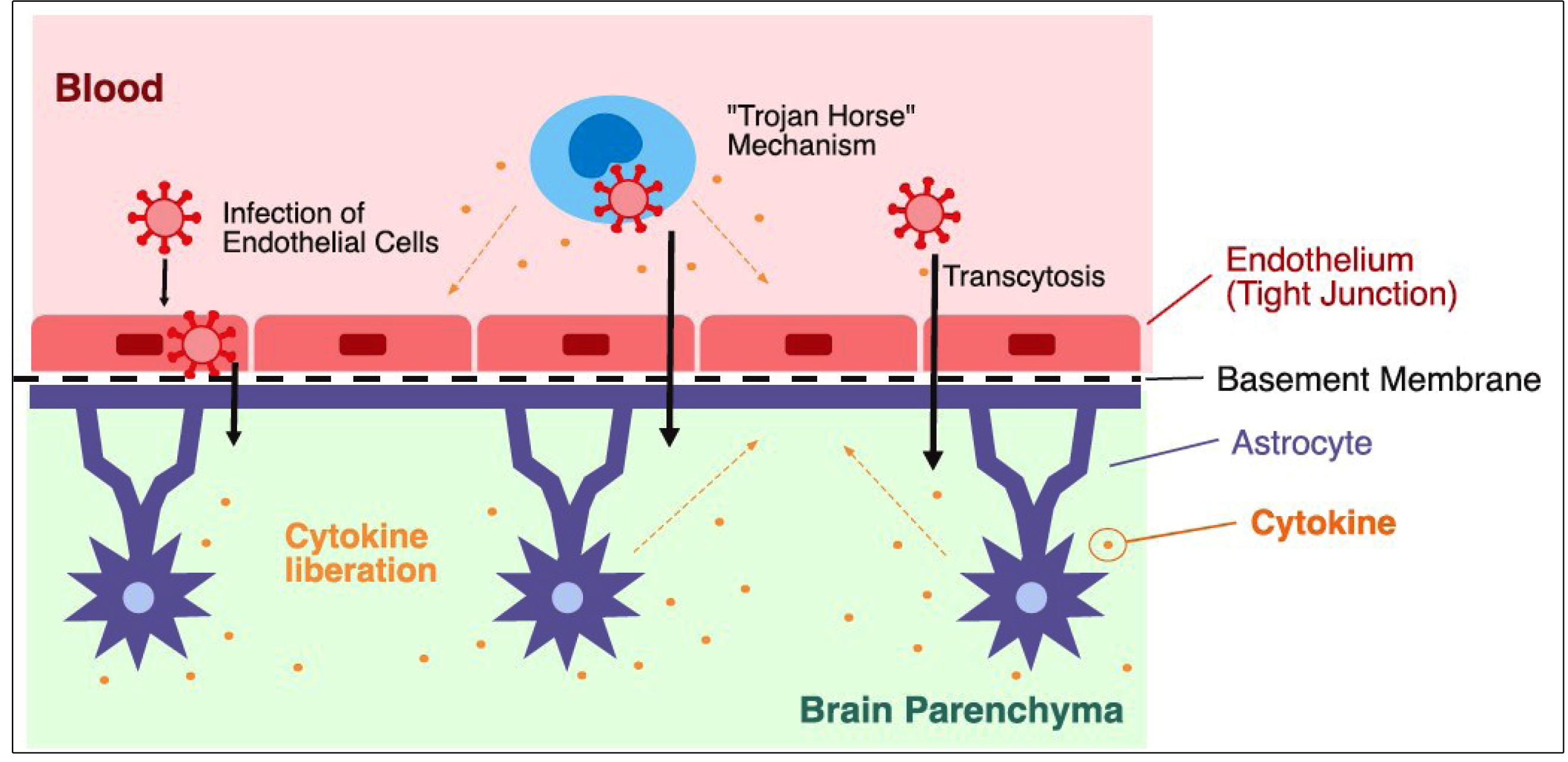Abstract
Recent reports indicate that besides respiratory and systemic symptoms among coronavirus disease (COVID-19) patients, the disease has a wide spectrum of neurological manifestations (encephalitis, meningitis, myelitis, acute disseminated encephalomyelitis, metabolic and acute hemorrhagic necrotizing encephalopathy, cerebrovascular diseases, Guillain-Barré syndrome, polyneuritis cranialis, dysautonomia, and myopathies). The severe acute respiratory syndrome coronavirus 2 (SARS-CoV-2) can spread from the respiratory system to the central nervous system, using transneuronal and hematogenous mechanisms. Although not every COVID-19 patient will test positive for the virus in the cerebrospinal fluid exam, the appearance of neurological symptoms associated with SARS-CoV-2 infection reveals the importance of understanding the neurologic manifestations and capacity for neural invasion associated with the pathogen. These aspects are relevant for correct diagnosis and treatment, and for the potential development of vaccines. This review highlights the latest evidence of SARS-CoV-2 infection with a focus on neurological involvement and potential neuropathogenesis mechanisms.
Keywords:
SARS-CoV-2; Coronavirus disease; Neuropathogenesis; Nervous system; Cerebrospinal fluid

 Thumbnail
Thumbnail
 Thumbnail
Thumbnail

